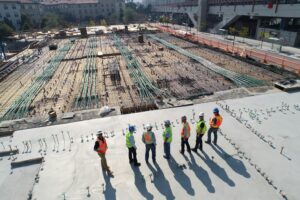Common Building Code Violations and How to Avoid Them
Identifying Common Building Code Violations in the USA
This section will explore some of the most frequently encountered building code violations in the USA, providing insight into what these violations typically involve and why they occur.
Understanding Structural Violations
Structural violations often occur when the construction fails to meet the required standards for stability and integrity. These violations can include inadequate load-bearing structures, improper use of building materials, or faulty construction techniques, and can lead to severe safety hazards if not corrected.
Electrical and Plumbing Code Issues
Electrical and plumbing code violations are among the most common building code violations in the USA. These issues can arise from outdated installations, improper installations, or failure to follow updated codes, leading to potential safety risks such as fires or water damage.
Non-Compliance with Accessibility Standards
Ensuring compliance with accessibility standards is crucial but often overlooked in construction projects. Violations in this area typically involve failure to provide adequate access to people with disabilities, which not only breaches building codes but also the Americans with Disabilities Act (ADA), resulting in legal repercussions.
Consequences of Building Code Violations
This section will discuss the potential legal, financial, and safety consequences of failing to comply with building codes, highlighting the importance of adherence to regulations in construction projects.
Legal Repercussions of Building Code Violations
Building code violations can lead to significant legal challenges, including hefty fines, delays in project timelines, and potential lawsuits. Failure to comply with building codes can result in legal actions by local authorities or affected parties, emphasizing the necessity for legal compliance and due diligence in construction projects.
Financial Impact of Non-Compliance
Non-compliance with building codes can greatly affect project budgets, resulting in financial losses due to penalties, rework costs, and litigation expenses. The economic consequences can be severe, affecting not just the immediate project but long-term financial stability and reputation of the construction company involved.
Safety Hazards Related to Building Code Violations
Safety is a primary concern when building code violations occur, as they can compromise the structural integrity and safety standards of a building. These violations increase the risk of accidents, injuries, or even catastrophic failures, underlining the imperative to maintain stringent safety measures and compliance during construction.
How to Avoid Building Code Violations in Your Construction Projects
This section will provide practical tips and strategies for avoiding building code violations, including consulting with professionals, staying updated with local regulations, and implementing effective planning and review processes in construction.
Consulting with Experienced Professionals
One of the most effective ways to prevent building code violations is by consulting with experienced professionals throughout the construction process. Engaging architects, engineers, and certified inspectors from the project’s outset ensures that all design and construction plans adhere to the current building codes, minimizing the risk of non-compliance.
Staying Updated with Local Building Code Regulations
Building code regulations are subject to change, and staying updated with these changes is crucial for compliance. Regularly reviewing local building codes and attending workshops or seminars can provide valuable insights into any amendments or new regulations, helping project managers maintain adherence throughout construction.
Implementing Thorough Planning and Review Processes
A well-structured planning and review process is essential to avoid building code violations. This involves detailed scrutiny of project plans and construction phases to ensure that every aspect aligns with code requirements. By instituting rigorous checks and balances, construction teams can identify and rectify potential violations before they escalate into costly issues.
Role of Inspections in Preventing Building Code Violations
This section will cover the importance of inspections in the construction process, detailing how regular and thorough inspections can help identify potential building code violations early and ensure compliance with building standards.
The Importance of Routine Inspections
Routine inspections play a crucial role in preventing building code violations in construction projects. By conducting regular checks at various stages of the construction process, inspectors can identify potential issues early on, enabling prompt corrections and ensuring the project adheres to all necessary building standards. This proactive approach helps maintain safety and compliance, reducing the risk of costly delays or legal issues.
Inspectors’ Role in Maintaining Standards
Inspectors are vital in upholding building standards by rigorously assessing construction work for adherence to codes. Their expertise allows them to evaluate structural integrity, safety features, and compliance with regulations. Inspectors provide valuable feedback and guidance to construction teams, helping them understand and rectify any deviations from the code, thus preventing violations and enhancing the overall quality of the building.
Benefits of Third-Party Inspections
Engaging third-party inspectors offers an objective perspective on a project’s compliance with building codes. These independent professionals provide unbiased assessments, which can uncover potential violations overlooked by internal teams. Third-party inspections offer a comprehensive evaluation of construction practices, ensuring thorough compliance checks, thereby minimizing risks and promoting adherence to all applicable building regulations.
Conclusion: Ensuring Compliance with Building Codes
In conclusion, understanding and avoiding building code violations is essential for successful construction projects in the USA. Awareness of common violations, such as structural and accessibility issues, alongside the legal and financial consequences of non-compliance, underscores the importance of diligence in adhering to regulations. By consulting experienced professionals, staying informed about local codes, implementing thorough planning processes, and conducting regular inspections, construction teams can ensure safety, compliance, and quality in their projects. Prioritizing these strategies not only avoids potential pitfalls but also contributes to the integrity and longevity of buildings.






